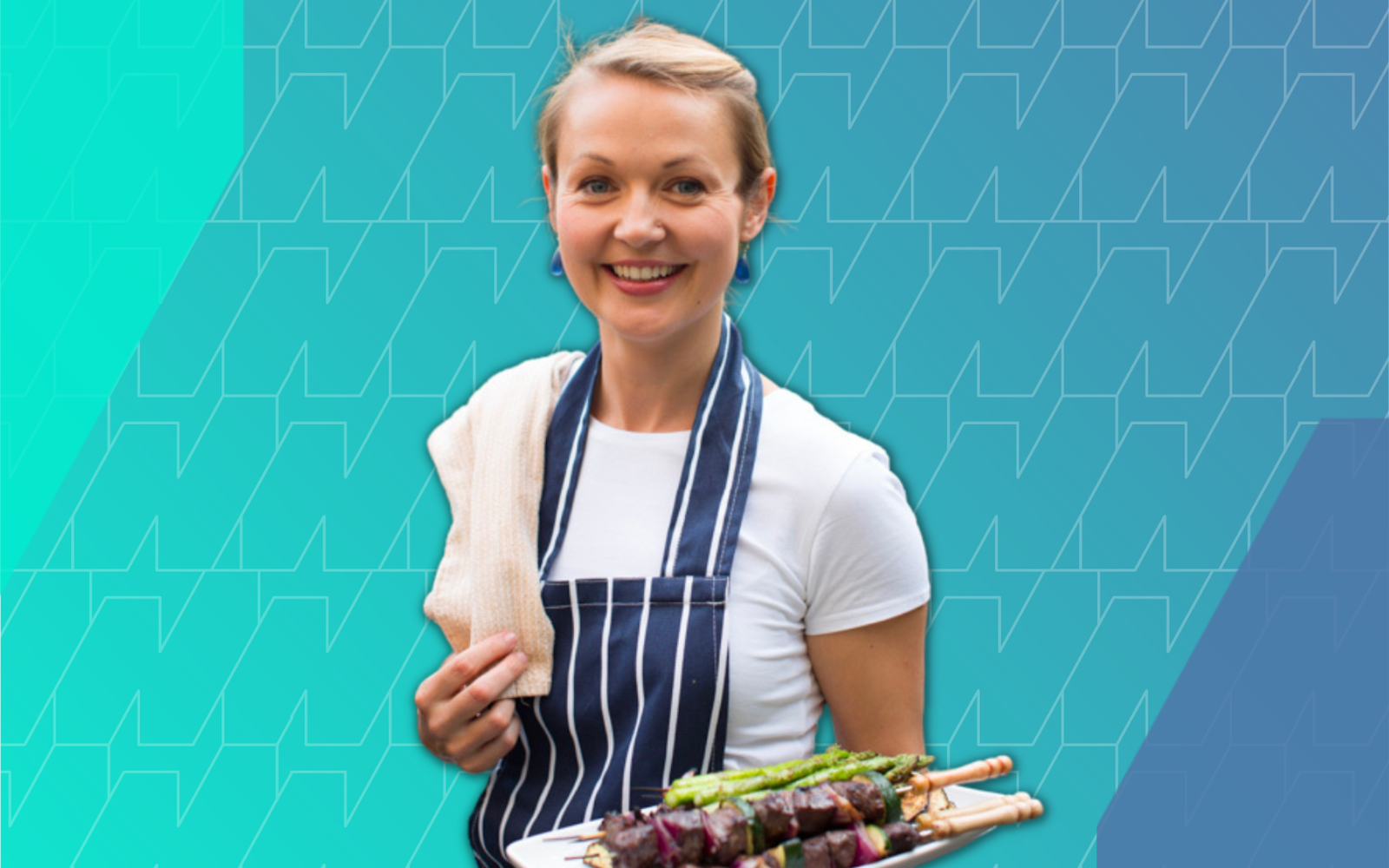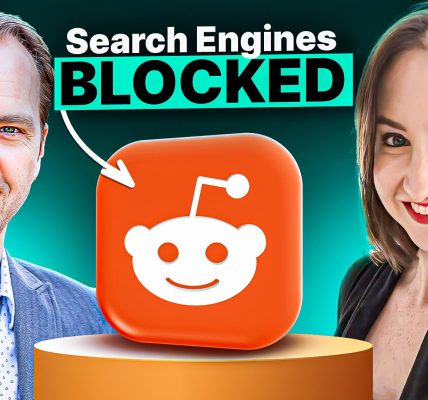Irena Macri has been on a real rollercoaster ride ever since she launched not one but two food blogs.
Over the last decade, she’s faced no shortage of challenges. That includes everything from losing access to her 100k Facebook group and having to start over, living in a campervan and renting out Airbnb’s to shoot recipes, and rebranding one of her blogs not once but multiple times.
But she’s at the top of her game, as savvy as ever, ready to pivot when needed, and currently bringing home around $12k per month. And has every intention to grow her sites bigger.
Keep reading to find out:
- What inspired her to start her sites
- How she grew her paleo blog
- Why she rebranded
- How she sold her cookbooks
- How her second site is different from her first one
- Where her income comes from
- How much traffic her sites get
- Her top marketing strategies
- Her views on SEO
- How she approaches keyword research and link building
- Her content creation process
- How she grows her email lists
- Her favorite tools and resources
- Her greatest accomplishment
- Her main mistake to date
- The advice she offers other entrepreneurs
Meet Irena Macri
My name is Irena and I’m a food blogger, recipe developer, cookbook author, online publisher, and a qualified nutrition coach. I publish two food blogs: Instant Pot Eats and Cooked & Loved. This is pretty much my full-time job, as well as being a mom to a toddler.
I call myself the Chief Executive Foodie at Crave Collective, which is an umbrella company for both of my websites and any digital products I create.
On a daily basis, I do everything from SEO research to recipe cooking and photography to blog writing and eBook creation.
I also spend a lot of time coordinating and managing editorial calendars, and tasks for VAs, working with external production teams, developers, etc. I am all hands on deck!
I am a Ukrainian-Australian based in Sydney, and for a number of years, I lived in London. In my spare time, I enjoy running, rock climbing, hiking, and spending time outdoors with my partner and friends.
Why She Created Her Paleo Blog
Back in 2011, I read a book called The 4-Hour Work Week, which sparked my desire to build a business that could bring passive income, although I know now there is no such thing as passive.
I have a degree in digital media, and for many years I worked in traditional online publishing and media, so it was natural for me to dive into some kind of online venture. The reason I got into food blogging was because I have always been a passionate foodie and a good cook.
Back in 2012, I was following the Paleo Diet, and that being the niche close to my heart, I launched my first blog, Eat Drink Paleo.
Even though I had a lot of experience in digital media, I still had so much to learn about self-publishing a blog, SEO, social, and building my own business. With a lot of hard work and a bit of luck in choosing a niche as it was just taking off, that website became one of the most popular paleo blogs during those early years of paleo.
Off the back of that journey, I became a published cookbook author, first self-published and later picked up by Penguin Random House, with whom I did my second book and got the first one distributed around the world.
Over the years, that food blog evolved into Cooked & Loved, which is one of the sites I publish today. It’s dedicated to simple, delicious recipes, often with a healthy twist.
How She Grew Her Paleo Blog
Cooked & Loved is like my first baby, it’s a very personal food blog and I do most of the heavy lifting, from SEO research and content creation to writing newsletters and developing products.
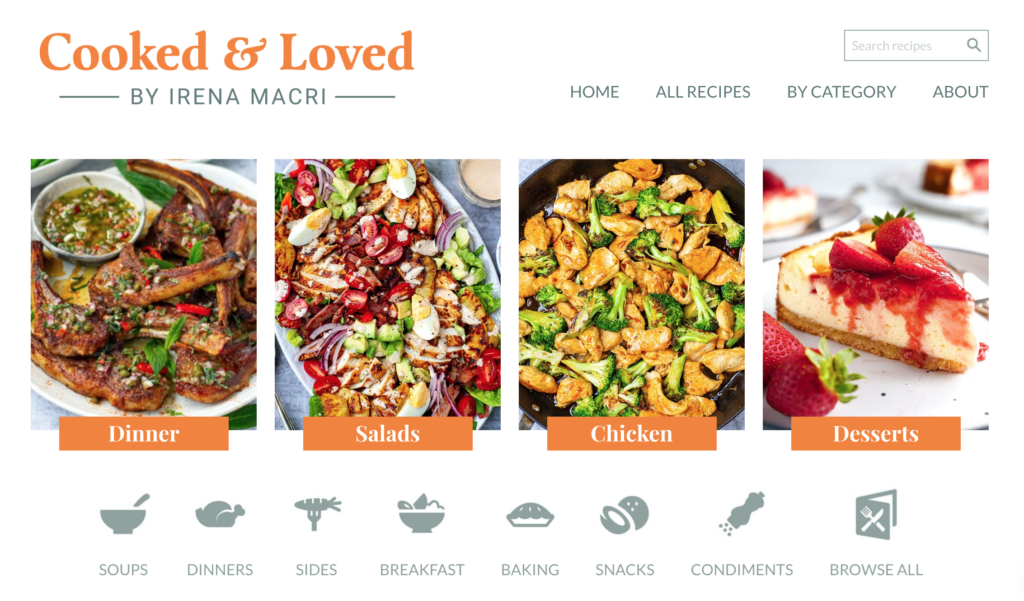
I outsource a few things like Facebook scheduling, Pin Ideas, Web Stories, some roundups, and video production, but I do all the recipes myself.
This website has gone through a rollercoaster of changes, re-brandings, re-designs, traffic and income gains and losses, huge ups and some downs. But despite this, it has gained very loyal followers who are still my readers today.
What’s interesting about this journey is that the blog has gone from being very niched down (focusing on Paleo & Low-Carb) to now including more types of recipes and catering to a more varied diet.
Bloggers often get recommended to niche down, but this more general approach gives me the flexibility to pivot and cover more current and future trends, as well as where I am as a person.
The rebranding transition from Eat Drink Paleo to Cooked & Loved came at a cost as I had to rename the blog and change my domain, but I think it will be worth it in the long run. I learned a lot during this process.
I initially changed from Eat Drink Paleo to IrenaMacri.com back in 2019, I think.
My thinking at the time was that I wanted to build myself as a brand and I was doing more nutritional coaching services and so on. That was a big changeover because, as part of that redesign, we did a full SEO audit and completely overhauled my site’s structure, so many URLs had to change, category pages, design, everything!
As we expected, the traffic drop was almost immediate, like back to almost nothing. But it bounced back within 6 months.
Then, in 2022, I decided to change the name again. Having my personal name as part of the brand wasn’t working for me. I think new users couldn’t really resonate or identify with that name as they didn’t know who I was and I also wanted to remove the name in case I wanted to sell the business in the future.
This change was more streamlined as we were only changing the core domain name, the URL structure remained the same, so the traffic drop wasn’t as significant and it bounced back quicker. I am much happier with the new brand and feel it has longevity now.
If anyone ever wants to rebrand, make sure you do as much research as possible and work with a good developer to make sure all the URLs are remapped properly. It’s a big investment and you will inevitably lose traffic, so do it for the right reasons.
How She Wrote Her Cookbooks
My first cookbook is Eat Drink Paleo Cookbook. I first self-published it and was printing copies in Berlin. It was then picked up by Penguin and they republished it around the world. It came out in multiple languages, which is really cool.
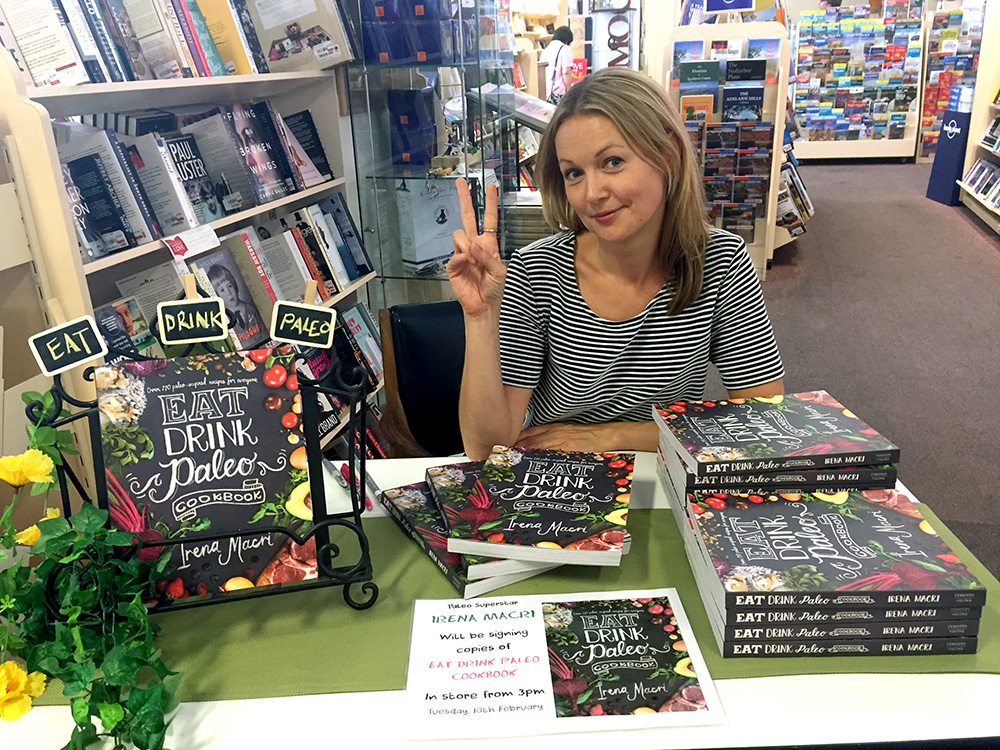
We then did a cookbook together called Happy Go Paleo, which is like a relaxed version of Paleo and is focused on complete meals.
I have since published a few eBooks, notably Salad A Day and Paleo Breakfast Cookbook.
I would love to do another printed cookbook, but after doing a self-published version and working with a big publisher, I would most likely go with a self-published option or work with a more progressive/modern publisher, who offers more creative control and better royalties to authors.
Why She Created Her Second Food Blog
My second blog, Instant Pot Eats, came a few years after Eat Drink Paleo.
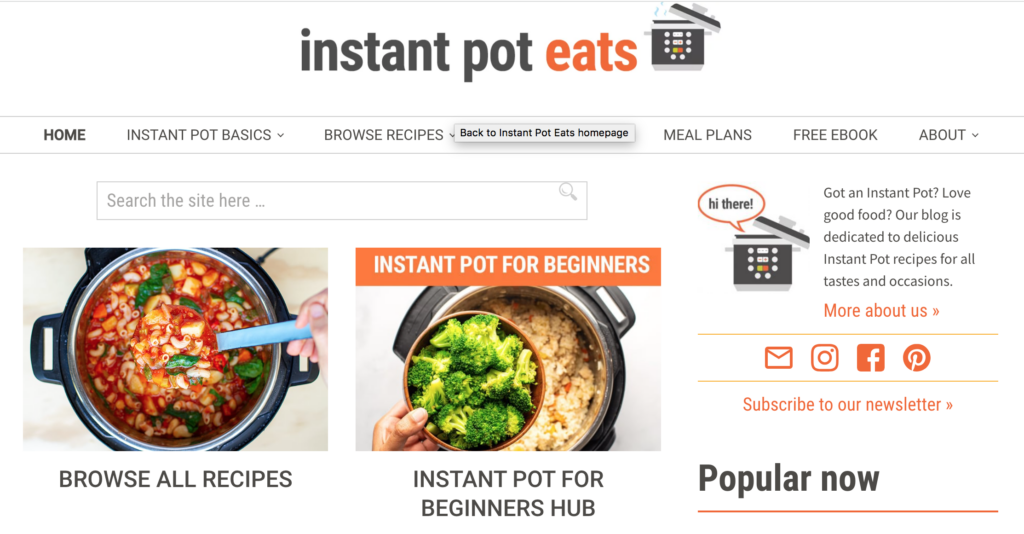
It was in 2016, around Thanksgiving, when I purchased my first Instant Pot during the Black Friday sales. I searched for Instant Pot recipes online and discovered there was a gap. I knew it was gaining popularity and saw it as a new opportunity.
And similarly to Eat Drink Paleo, I somehow managed to get into a niche just as it was taking off and it really helped to grow the audience and start earning income fairly quickly. And the rest is history!
Instant Pot Eats is less personal for me in the sense that I am not the face of the brand.
For this website, I have more of a managerial and editorial coordinating role. I have an incredible virtual assistant, Ann, who is an absolute superstar and plays a key role in running the Instant Pot Eats site.
I do SEO research, plan the editorial calendar for all our recipes and posts, outsource recipe images and videos, work with the developer on website updates and improvements, and so on. I also manage project briefs and tasks for Ann who does all social media, newsletters, uploading content to Worpdress, updating posts, creating roundups, making pins, eBook layouts, and so on.
This website is dedicated to a very specific cooking niche—Instant Pot recipes—and its growth trajectory is very similar to the growth of the Instant Pot itself. As this gadget’s popularity grew, so did the traffic to my site.
This niche is quite seasonal, so I see a significant traffic decrease over summer and a big surge in fall and winter, especially around Thanksgiving and Christmas, when many new people acquire the Instant Pot as a purchase or a gift.
I think this kind of niche has pros and cons.
Our audience grew quite quickly initially because we were one of the first dedicated blogs. But as more and more websites started creating Instant Pot recipes, the competition got bigger and today we no longer have the lion’s share of the traffic. We are still benefiting from having a high-authority website with lots of content, but it’s definitely much harder to grow.
Plus, as with many niches, the topic of Instant Pot has cooled down a little, so we have to be creative with our content strategy.
Irena’s Other Business Projects
During the last 10 years, I had a couple of other online businesses which were partnerships.
One was around nutrition and wellbeing and earned money through an online/eBook course. This was a nice project but was shut down as my partner moved on to do something else.
Another business was an online wellness/paleo program with its own separate website, which my partner and I sold after two years as we were struggling to keep our other websites going (by this stage I was running three sites).
In addition, I have taken part in quite a few eBook and digital product bundle sales in the past (as a product contributor or an affiliate), some of which were very profitable for me.
Today, I focus on the two websites Instant Pot Eats and Cooked & Loved. As much as I get distracted by other niches and opportunities, I’ve decided to stay focused on optimizing and growing these two brands.
How Much Money She’s Making
My blogs are not the mega stars of food blogs, but they drive pretty good traffic and bring in a sizable income each month.
Over the years, this income has fluctuated due to various factors.
Today, my main income comes from the Mediavine platform, which serves ads on both of my blogs. During a good traffic month, I get around $10,000 from both sites. During the Instant Pot hay day, which was probably 2019 for us, and while Paleo was more popular, the income from ads was around $12,000 on a good month.
I’d say 70{57b8cc37fd24bce1cf64c8b05d9407ce9171516056c1f5e762677747187a0de4} of that comes from Instant Pot Eats and the other 30{57b8cc37fd24bce1cf64c8b05d9407ce9171516056c1f5e762677747187a0de4} from Cooked & Loved.
Instant Pot Eats has 90{57b8cc37fd24bce1cf64c8b05d9407ce9171516056c1f5e762677747187a0de4} US audience and, thus, higher RPM rates, while Cooked & Loved is only 40{57b8cc37fd24bce1cf64c8b05d9407ce9171516056c1f5e762677747187a0de4} US and the remaining readers are from Australia and other English-speaking countries.
As such, my advertising revenue for this blog is smaller due to smaller RPM rates. In addition, the Cooked & Loved site went through a full rebranding only last year and we experienced a traffic drop (as expected), which has now bounced back, but it did affect our RPMs and revenue for a while.
In addition, I receive about $300-400 per month from affiliate marketing, mostly Amazon Associates links for ingredients and products relevant to a recipe.
We get $200-300 from eBook sales on Cooked & Loved. This goes up and down as I can earn $1000-5000 when I first launch a new eBook and even more for an online course (like the paleo program I used to sell back in the day, which did quite well).
When I self-published my first printed cookbook, Eat Drink Paleo (and an eBook version), I was earning $5-6k per month in sales for the first 6-12 months, as this was when the paleo diet was very popular.
I guess the lesson here is that your income from online publishing can vary month to month and year to year. There are many factors like varying industry RPM rates, Google changes, social media algorithm changes, seasons, new competitors, and much more.
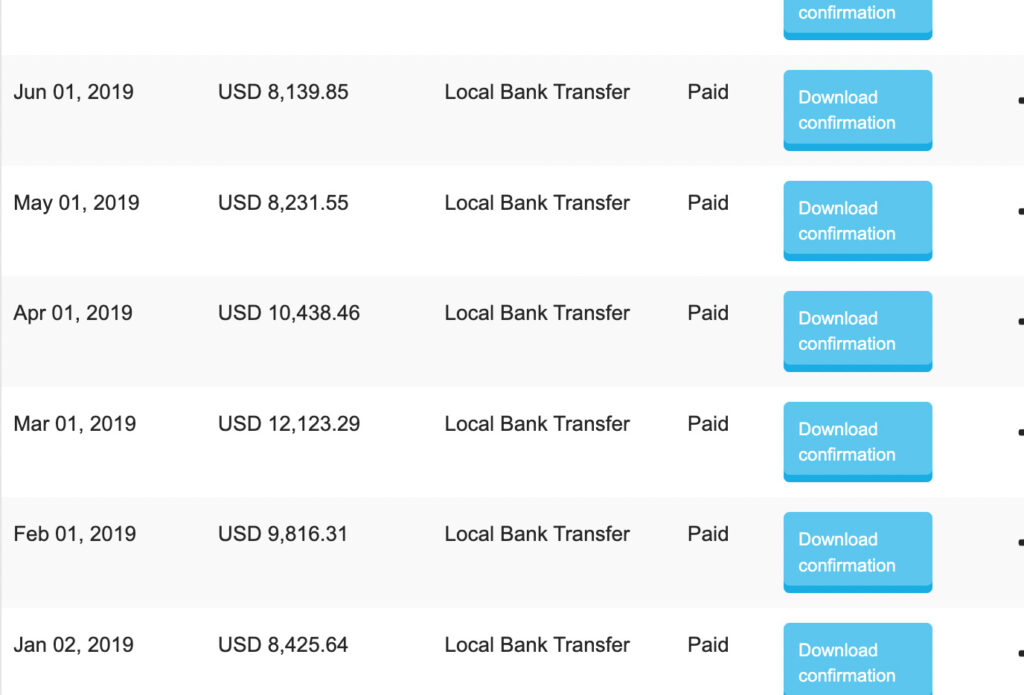
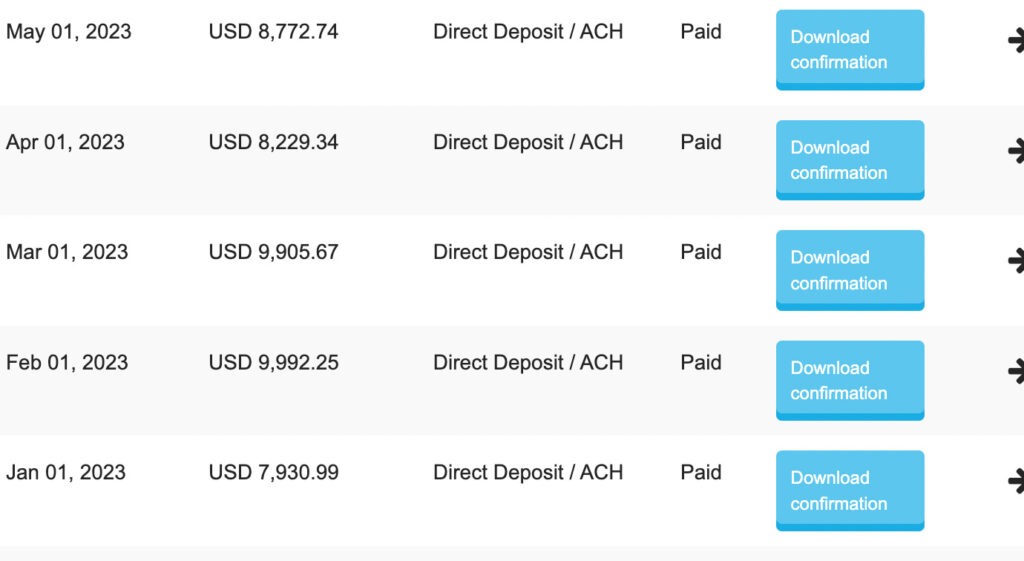
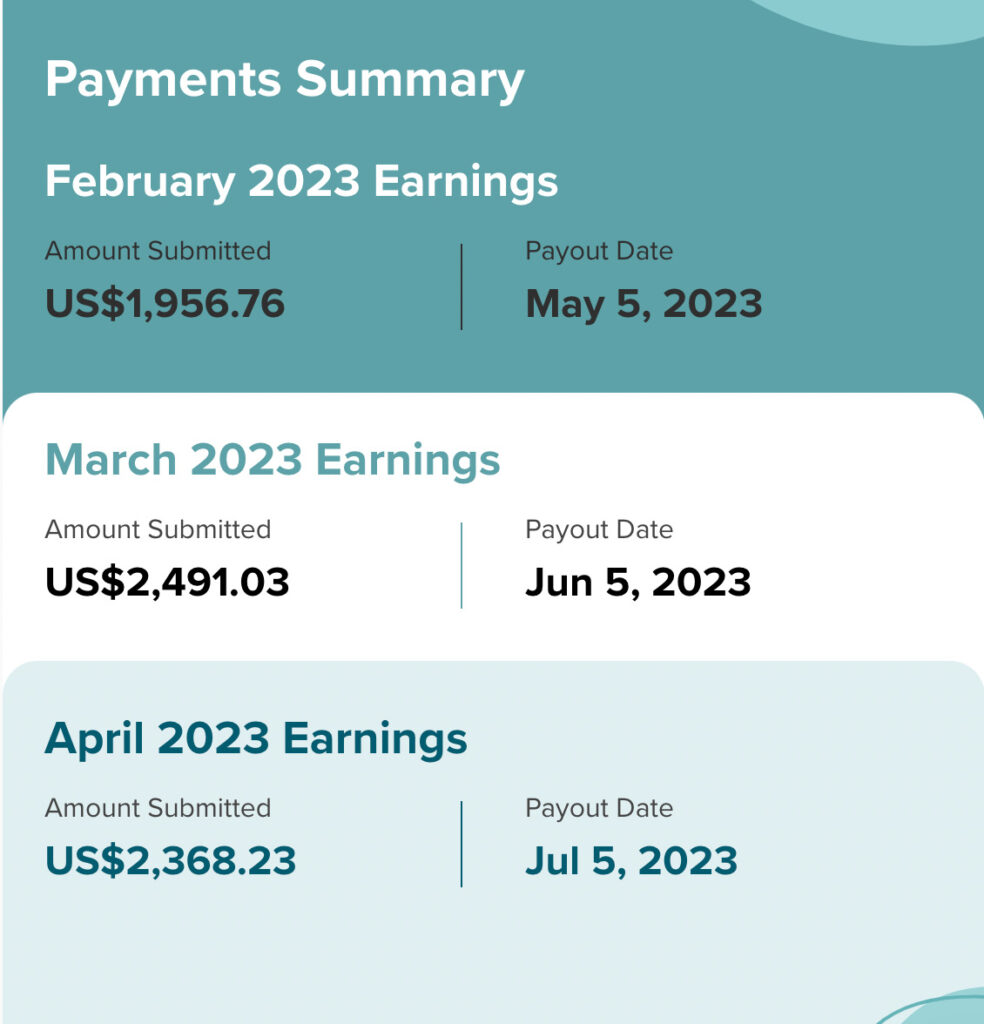
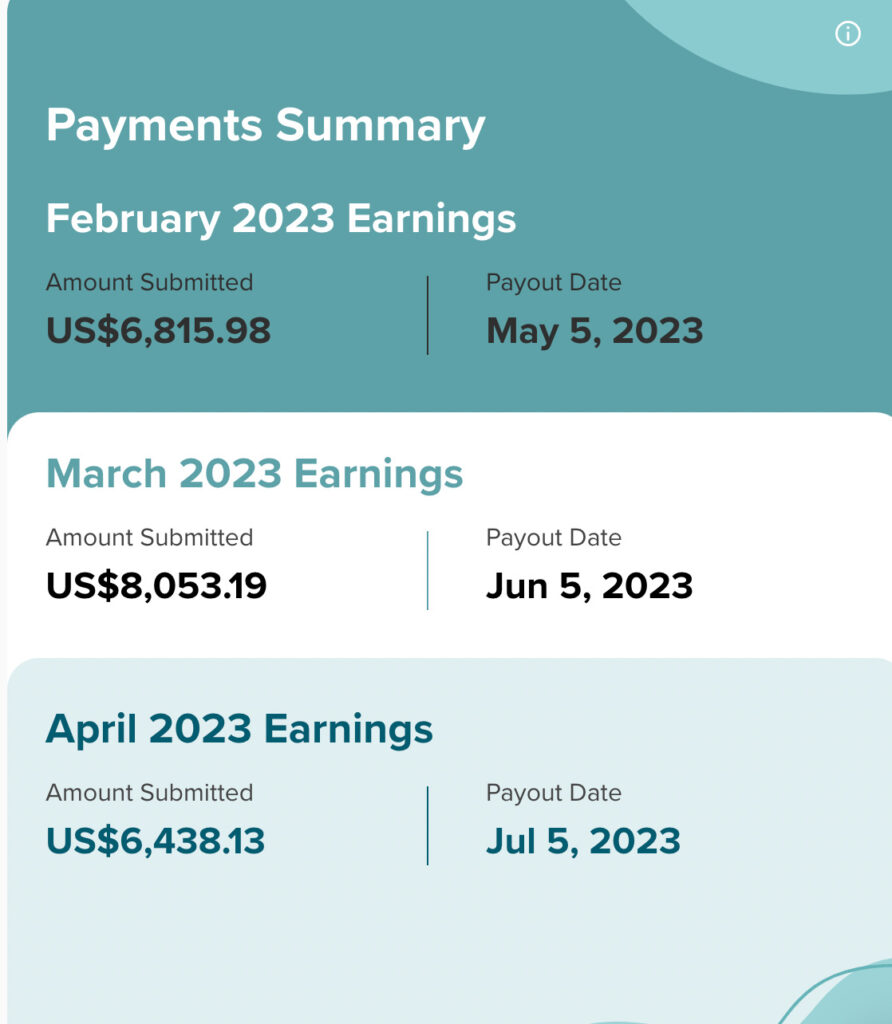
At the moment I work on the business for 20-25 hours. It used to be a lot more before my daughter was born. She’s in daycare only 3 days a week at the moment, so I end up working a few hours early in the mornings or in the evenings after she’s gone to sleep.
I value my work-life balance these days and weekends are for family; I try very hard not to open my laptop, although I do test some recipes.
How Much Traffic Irena’s Getting
Instant Pot Eats gets between 200-300k users per month (400-500k page views) during the higher season (fall/winter), and I think our best month was 405,000 users (720,000 page views) in 2019.
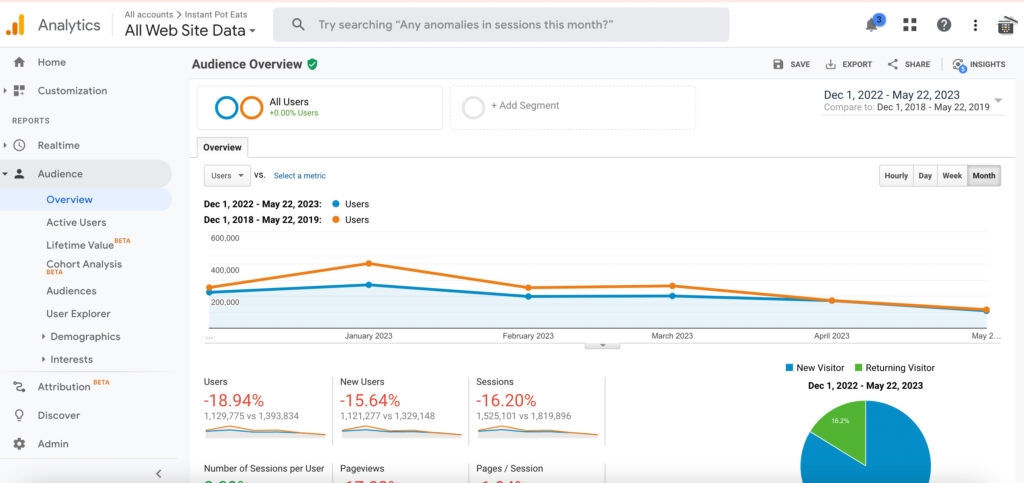
Cooked & Loved gets 110-150k users per month, but when it was Eat Drink Paleo in its prime in say 2014-2015, it was getting 200-230k users per month.
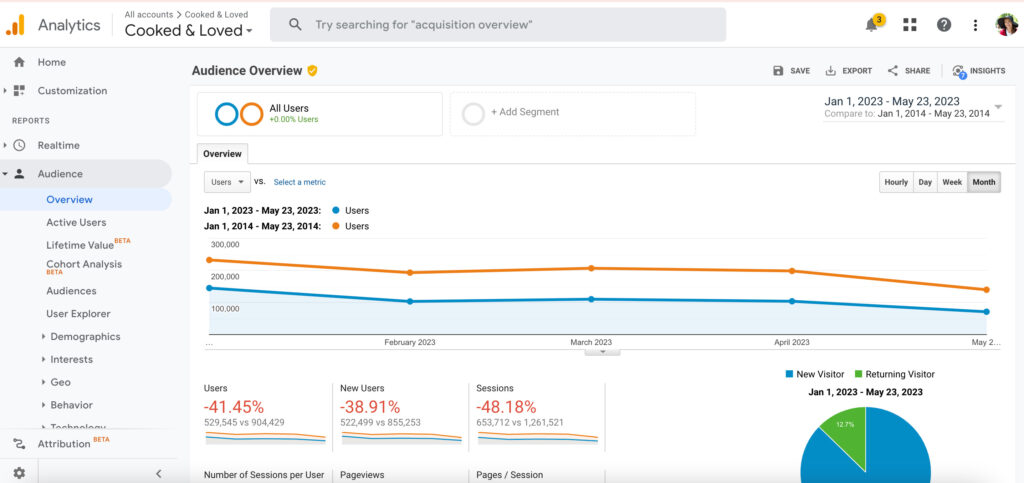
So this is a drop you might experience when the niche is no longer popular or/and when you rebrand your website and pivot in a new direction. It’s still good traffic, but my goal is to build it back up to those 200-300k users per month.
Her Top Marketing Strategy
Our #1 marketing strategy is creating lots of great content that is optimized for search and to stay active and engaged on social media platforms that either directly drive traffic back to us or that grow our brand through awareness and frequent engagement.
The main traffic sources for Instant Pot Eats are Google Search (around 60{57b8cc37fd24bce1cf64c8b05d9407ce9171516056c1f5e762677747187a0de4}) and direct visitors (over 25{57b8cc37fd24bce1cf64c8b05d9407ce9171516056c1f5e762677747187a0de4}). I attribute this large number of direct visitors to the high brand awareness we achieve through our Instagram page, where we have over 258k followers.
I know Instagram doesn’t work for everyone and it doesn’t drive direct links as well as say Pinterest or search, but it definitely helped us grow our brand and online presence, so we focus on keeping that very active and engaged.
Our Pinterest (we have 37k followers) is also strong, so we do lots of Idea Pins and make sure we have a regular pinning schedule. One of the marketing things that worked well was investing a little money to boost our Pins, which get good results for a low cost compared with Facebook or Instagram.
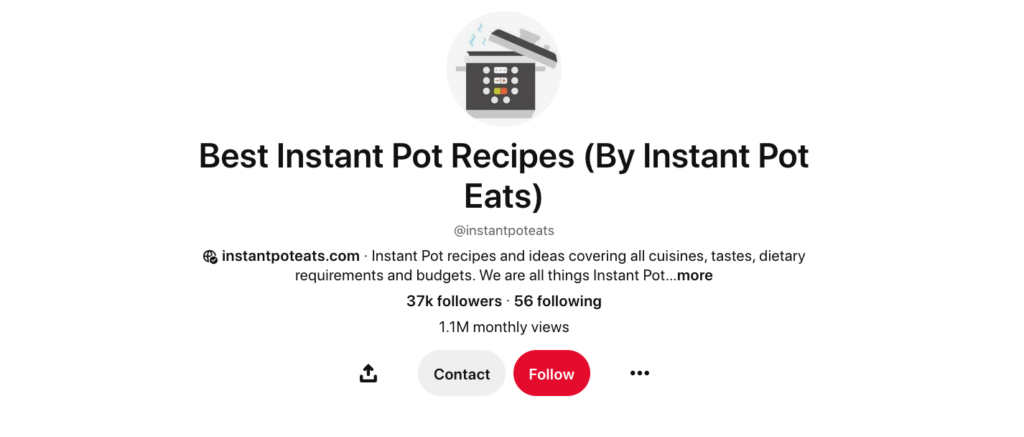
For Cooked & Loved, I focus on SEO and Pinterest but also on creating a lot of ”passion content.” You know, the stuff you share because it’s good and not because it has SEO potential. Sometimes, these recipes become trendy and searched for without even trying.
One thing I am focusing more on this year (for both sites) is email marketing, especially with the AI developments and potential traffic loss from Google. We’re working on new lead magnets, new welcome and evergreen nurture sequences for email subscribers, and trying to optimize and grow that channel.
The Importance of SEO
For both of my sites, SEO is very important as it drives between 60-70{57b8cc37fd24bce1cf64c8b05d9407ce9171516056c1f5e762677747187a0de4} of all traffic.
It has always been part of my strategy to grow traffic from search as social media traffic is so unpredictable and algorithm-dependent. Having said that, I think that with AI developments, relying on more direct traffic from users via email, social platforms, and brand awareness is going to be more important than ever.
In terms of SEO, we follow the seasons and create content for low-competition keywords but also medium to high-competition keywords if we think we can outrank other blogs or come up in the top 10 results on Google.
This might all change with AI-enhanced search, so we’ll be focusing on creating great content that gets traction with users, not just on search, but also on Pinterest and Instagram, where we have a big presence.
That means appetizing recipes that look good and catch people’s attention. It’s about getting them through the door! Once you have people cooking the recipe, rating, and commenting, those posts will naturally get noticed by Google.
We also try to stay on top of trends and incorporate those into our content strategy. Specifically, that’s Google trends for search traffic trends, and I keep an eye on what’s trending on TikTok and Instagram, what’s making the news, and what everyone’s talking about.
Irena’s Keyword Research Strategy
Every few months I use Google Search Trends to see which recipe/cooking keywords are popular or rising; this is as an overall stay-on-top-of-the-game kind of thing.
I use Ahrefs to track the performance of my sites, research keywords for recipe ideas, and I keep a long list of potential keywords for each blog, which I update and review regularly to see what we’ve done, what we should do, and so on.
As I mentioned earlier, my strategy is a combination of low-competition keywords but also some medium-competition, high-volume keywords that I think have a chance of ranking. For example, if the current top 5 ranking websites for a particular keyword don’t have high domain authority, we might focus on that topic.
Link Building
I have never bought links and I don’t use any specific link building strategies, but there are a few things that I have done and do that could probably be used as a strategy by someone.
From time to time, I submit my recipes to relevant roundups shared in Facebook blogging groups. And I occasionally swap links with a few food bloggers I know when we have relevant recipes to cross-link to.
Another thing that has worked is creating content around topics that other food bloggers and websites might want to link to.
For example, I have a few evergreen posts like Top 50 Most Nutrient Dense Foods, 101 Guide To Asian Greens & Vegetables, and A Guide To Instant Pot Buttons & Settings, and these types of posts get a lot of natural backlinks and rank well for me.
For some of them, I pick a keyword like the Instant Pot Buttons or Asian Greens, while others are more around what might attract links. I don’t do any proactive outreach for links but it is something I wouldn’t mind doing or outsourcing to someone.
In addition, being an expert or authority on a topic can bring a lot of backlinks, such as submitting a quote to an article, doing interviews, podcasts, and contributing recipes and other good content to other sites.
This worked well for me when I published my first cookbook and was doing a lot of PR for it; it brought a few high-quality backlinks without actually trying to get them.
Her Content Creation Process
I try to plan our content a few weeks in advance but it doesn’t always happen. I envy bloggers who have their content calendars mapped out for months and months ahead. I am very ad-hoc and will often shoot a spontaneous recipe because I feel like it.
Our content strategy changes with the seasons.
For example, for Instant Pot Eats, we aim to produce a lot of new content during the high season of fall and winter. Then when the summer comes, we drop our content production and instead focus on updating and optimizing old posts, working on projects, coming up with ideas for fall and winter, eBook creation, website updates, and other maintenance tasks.
For Cooked & Loved, the seasons are less important because my traffic comes from both hemispheres, so if anything, the challenge is creating relevant, seasonal content for both US and Australian readers at the same time.
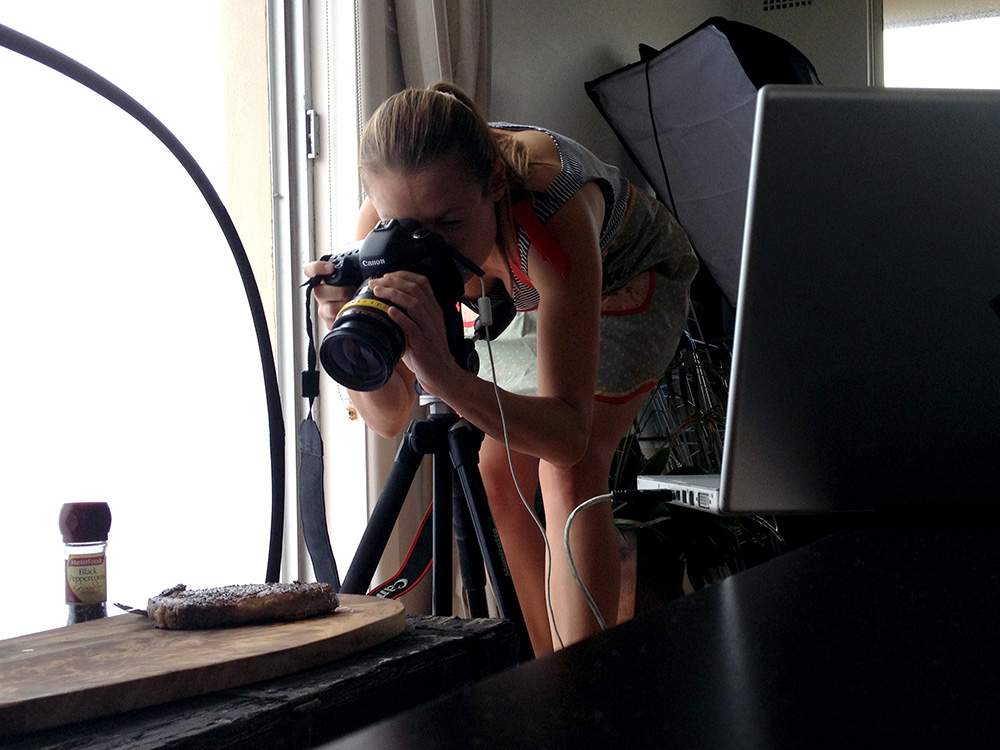
When it comes to creating actual content, I usually come up with the recipes and test them in my kitchen first. I can’t always shoot right away either because I cook at night or have a toddler running around.
Sometimes, I don’t even test the recipe as I have enough experience and knowledge to know if an idea will work and I am really good at knowing the amounts of foods and ingredients something will need.
When it comes to creating recipes for the blog, I either cook and shoot them myself or I outsource the photos or videos to a production team, in which case I write the recipe briefs with visual references for the dish.
The cooking and shooting of the recipe is the quick, easy part. Once we have the assets, we write the full recipe blog with all the SEO optimization in mind, process and add images, step-by-step, videos, nutritional info, and so on. Each recipe takes a few hours to a day to put together.
I try doing certain tasks in batches, like processing photos for multiple recipes in one session, doing SEO research for all upcoming recipes in another session, and so on, but it doesn’t always happen this way.
Her Email List
Email marketing is now more important than ever. It’s the only communication channel with readers that you essentially own and control. We have over 26k subscribers for Instant Pot Eats and similar for Cooked & Loved, although I recently deleted a few thousand inactive subs to clean up my list.
Besides the usual sign-up forms on the site, I use lead magnets such as free recipe eBooks or meal plans to drive subscriptions. We then send out a welcome sequence of emails that introduces the blog and shares some of our most popular content.
On Cooked & Loved, I have a couple of diet challenges and courses that are free, and those require a sign-up and have a long email sequence that provides valuable content but also drives traffic back to the site.
We plan to create more content-specific lead magnets this year, which we can serve on particular categories or pages on the site.
Irena’s Favorite Resources
In the early days, I listened to a lot of Smart Passive Income podcasts, which is great for anyone looking to get into an online business.
Today, I enjoy Food Blogger Pro and Blogger’s Millionaire podcasts. I get a lot of valuable information from Food Blogger Central and Mediawine Facebook groups; I always learn something new there.
Her Top 3 Tools
Oh gosh, 3 is not enough!
I guess Ahrefs for all things SEO, Trello for all editorial calendars and task management, and GetResponse and LeadPages for email marketing, sales pages, and so on.
We use Google Drive for sharing documents, spreadsheets, and files. I also use Photoshop almost daily because I do most of my own food photography and we’ve been using Canva for some graphics and eBook design and layout.
Her Biggest Challenge
On a personal level, it would be a lack of time. There is so much I could have done and still want to do, but it’s much harder once you have kids or look after a family. I also have hobbies outside of work, and it’s a constant battle of choosing to do those vs staying at home and working on the blog.
From a business perspective, the biggest challenge is the ever-changing technology landscape and trying to keep up with new guidelines, new social platforms, and so on. It never stops but you can only do so much.
Her Greatest Accomplishment
Overall, I think the accomplishment is that I was able to create a business that gives me the freedom to work when, where, and how much I want.
On a more granular level, self-publishing my first cookbook was huge for me and also releasing any other new products is always an achievement because they take so much work.
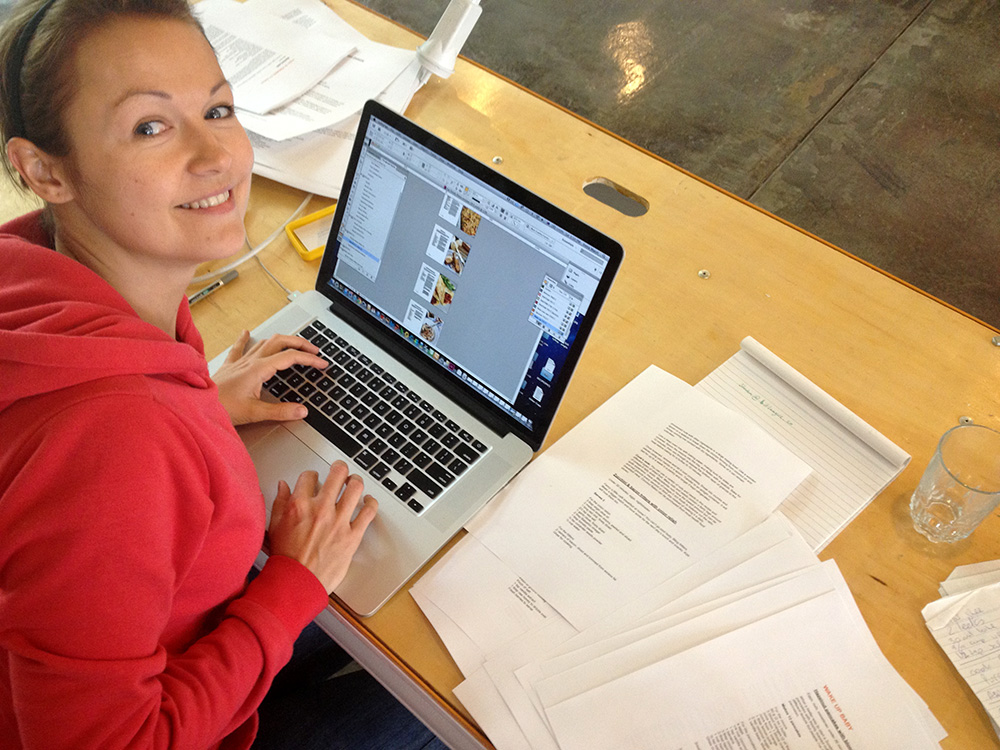
What She Wishes She Knew When She Started
Focus on your own game and don’t get too distracted by endless opportunities coming your way. It’s okay to take on new projects and partnerships but think carefully about how and where you invest your time.
Looking back, I kind of wish I didn’t get into some big projects and instead focused on creating more content for my existing site because I could have taken it much further than where it is today.
Also, I should have created more video content when I had more time for it. These days, it’s the thing that takes the longest so I outsource it, which costs money.
Her Main Mistake
Not having another Admin on my Facebook business page is my biggest mistake! When I lost access to my personal Facebook account, I had no way to access my business Facebook pages, one with over 100k users.
Unfortunately, that platform was not able to support me, and so that page just sits there and I had to start a new one from scratch. Can you tell I am not a fan of Facebook?
Her Advice for Other Entrepreneurs
Pick your niche carefully and think twice about the name of your business. It needs to have longevity and give you the flexibility to change directions and pursue new topics.
Think about where you might one day want to sell your business as this should also affect how you name it, if you’re the face of it, and what it is.
